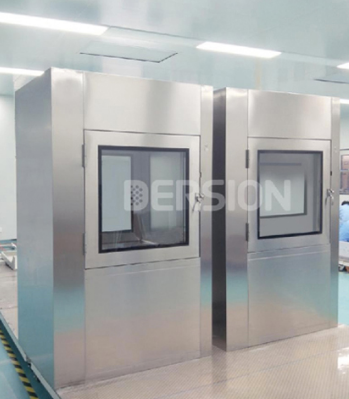Airflow pass boxes are a type of ventilation transfer equipment that is widely used in various industries for transferring items between different cleaning areas. These pass boxes are designed to create a stable air curtain on the surface of the items being transferred by generating a strong airflow. This effectively isolates microorganisms and particle pollutants in the air, leading to improved cleanliness of the transferred items. In this article, we will explore the basic characteristics and industry applications of airflow pass box , highlighting how they provide convenient, efficient, and safe object delivery solutions.
One of the key characteristics of airflow pass box is their ability to create a powerful airflow that forms an air curtain on the surface of the items being transferred. This air curtain acts as a barrier, preventing the entry of harmful microorganisms and particle pollutants from the surrounding environment. The strong airflow also helps to remove any existing contaminants or particles that may have settled on the items, further enhancing their cleanliness. This feature is crucial in industries where maintaining a high level of cleanliness is of utmost importance, such as pharmaceutical manufacturing, electronics assembly, and research laboratories.
Additionally, airflow pass boxes are equipped with industry-leading filtration systems. These systems typically include high-efficiency particulate air (HEPA) filters that are capable of capturing particles as small as 0.3 microns with an efficiency of 99.97%. This ensures that the air being circulated through the airflow pass box is clean and free from contaminants. The filtration system plays a vital role in maintaining the cleanliness of the transferred items, as it prevents any external pollutants from entering the transfer area.
Industry applications of airflow pass boxes are diverse and encompass a wide range of sectors. In the pharmaceutical industry, for instance, airflow pass boxes are commonly used to transfer raw materials, equipment, and finished products between different cleanrooms. The stringent regulations and requirements for cleanliness and sterility make airflow pass box an essential part of the pharmaceutical manufacturing process.
Similarly, in the electronics industry, airflow pass boxes are used to transfer sensitive components or equipment between cleanrooms. This is crucial for preventing the accumulation of dust and other contaminants that could compromise the performance and reliability of electronic devices. The use of airflow pass box ensures that the cleanroom environment is maintained, leading to improved product quality and reliability.
Moreover, research laboratories and medical facilities also benefit from the use of airflow pass box. These pass boxes enable the safe transfer of samples, delicate equipment, and hazardous substances without compromising the cleanliness and safety of the surrounding environment. By creating a controlled and clean transfer environment, airflow pass boxes play a crucial role in ensuring accurate and reliable experimental results in the research field.
In conclusion, airflow pass boxes offer several key characteristics that make them highly suitable for various industry applications. Their ability to generate a stable air curtain through a strong airflow effectively isolates microorganisms and particle pollutants, leading to improved cleanliness of transferred items. With their advanced filtration systems, airflow pass box ensure that the air circulating in the transfer area is clean and free from contaminants. These pass boxes find applications in industries such as pharmaceutical manufacturing, electronics assembly, research laboratories, and medical facilities. By providing convenient, efficient, and safe object delivery solutions, airflow pass boxes contribute significantly to the quality and reliability of products and experiments in various industries.
Post time: Nov-22-2023

